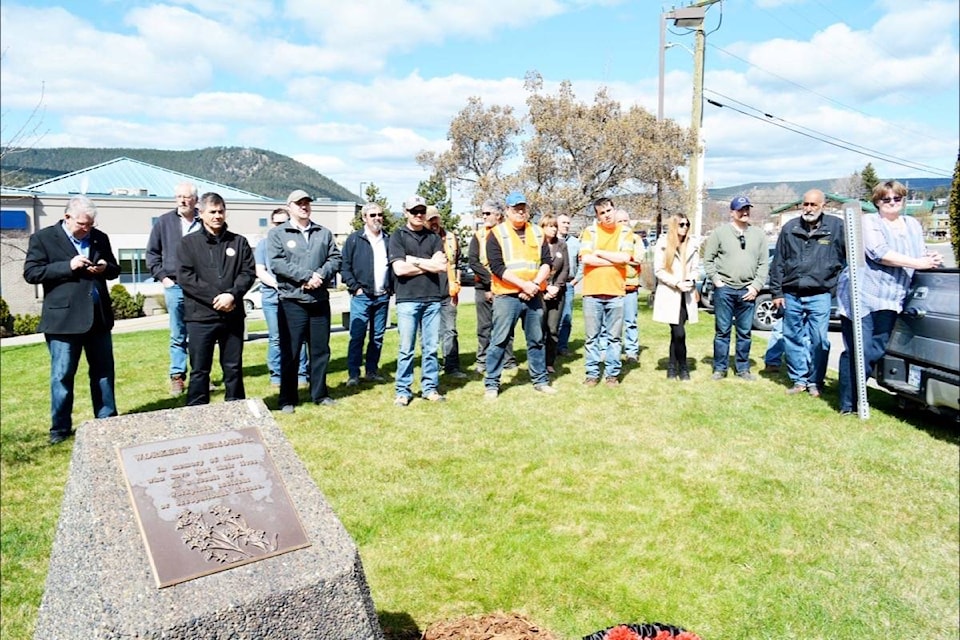Industry, union leaders, politicians and workers gathered to mark the National Day of Mourning in Williams Lake with a ceremony Friday outside city hall where the flags were at half-mast.
“Many of our safety laws are only here because someone died and others fought to ensure it doesn’t happen again,” said Mark Bissat, first vice-president United Steelworkers Union Local 1-425, who emceed the event. “We mourn for the dead, but fight like hell for the living.”
WorkSafeBC occupational safety officer Leonard Auger said last year in B.C. 144 workers died as a result of their work, with occupational disease being the single leading cause of work-related fatalities.
Of the 144 deaths in 2016, 85 were due to occupational disease and 64 due to asbestos exposure that happened decades ago, he added.
“We know that to help save lives we must prevent people being exposed to asbestos in the first place,” Auger said.
While traumatic fatalities accounted for 59 deaths, 37 resulted from workplace incidents with 22 caused by motor vehicle incidents, he added.
“Five of the 22 were young workers the age of 24 or under and their jobs were as diverse as landscaping, log truck driving, instruction, tree falling and the restaurant industry,” Auger said, noting employers have the responsibility to train young workers and workers have the right to be trained and work in safe conditions.
Mayor Walt Cobb said he researched the city’s history and discovered there have been two people die from work-related injuries.
“We have a memorial bench for Bill Elliott who was a traffic control person who was actually run over by someone down on Oliver Street,” Cobb said, noting he could not find any record for the second incident which happened more than 40 years ago.
Williams Lake Plywood general manager Dave Walgren said work places have changed since he first started his career.
“We have worked to reduce risks and put policies in place, but still more needs to be done,” he said. “We have to make work the safest thing we do in a day.”
Paul French, president of United Steelworkers Union Local 1-425 said everyone is working together to make work places safer.
“I have to give credit to the unions for how they push back and the companies for doing their work to raise awareness when something happens to find out any sort of cause,” French said.
Tolko’s regional safety supervisor Scott Wynn said it has been a difficult year with some devastating moments within the company.
“It is important for everyone in industry to work together and share best practices,” Wynn said, noting there can be no borders or secrets when it comes to safety. “Whenever there is a loss of life or serious injury in an industrial location we take time to remember that person but we must also learn from that situation.”
Cariboo-Chilcotin Liberal candidate Donna Barnett recalled how her father was a mill worker, who at 50 years of age, fell in a chipper and lost his legs.
“He went on and got retrained and spent another 15 years working,” she said.
Employers, governments and workers all have a role in making workplaces safer, Barnett added.
